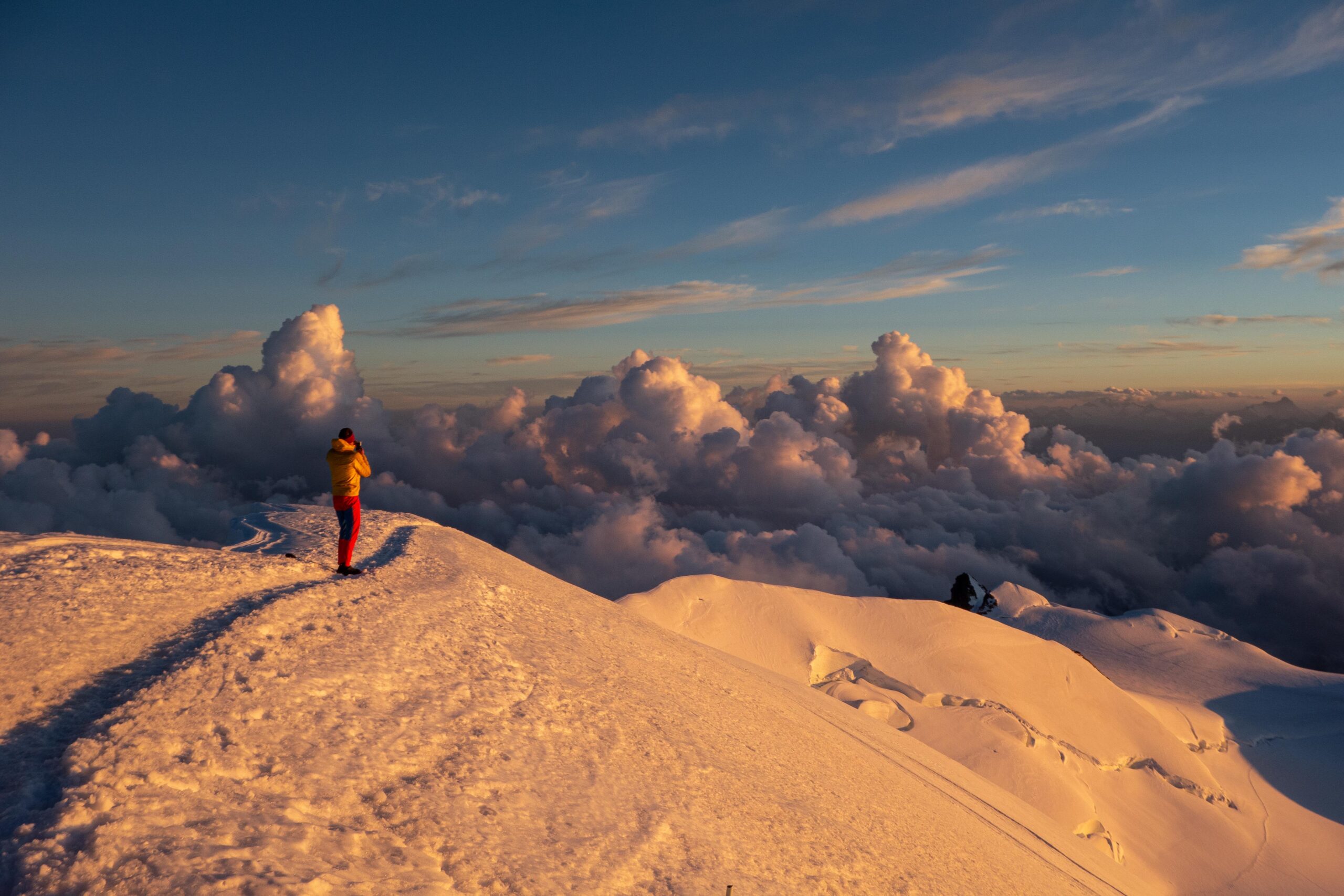Your first Alpine climb is a big moment. Whether you’re a seasoned hiker looking to take things to the next level or someone who’s always dreamed of standing on a summit surrounded by jagged snow-capped peaks, choosing the best first mountain to climb in the Alps can feel daunting. There are plenty of options, but the right choice depends on your fitness, experience, and what kind of adventure you’re after.
At Adventure Base, we guide people of all experience levels, from total novices to seasoned alpinists. We know that not all “beginners” are the same. Some arrive with years of trekking or scrambling under their belt; others have never worn a harness before. That’s why our Alps peak summit tours are graded from A (easiest) to E (most challenging), so you can find the right fit.
This guide will help you narrow down the beginner mountains in the Alps (and beyond) so you can find a climb that’s challenging, rewarding, and sets you up for future adventures. Scroll down to get started, and please just get in touch if you have any questions.
Understanding the A to E Grading System for Alpine Climbs
Before diving into specific climbs, let us quickly explain our grading system for climbs in the Alps:
- Level A: You’re a total beginner and not quite sure where to start, but you’re hungry for an adventure and can’t wait to get going. If you’ve got the enthusiasm and ambition, you can conquer a level A mountain!
- Level B: We’re dialling it up from level A now! You have some previous experience in the outdoors, whether that’s hiking, skiing, or climbing. You will either be starting to venture into more technical terrain or slightly more ‘aggressive’ environments.
- Level C: You have a fair amount of experience climbing, hiking, or skiing in more technical terrain. You’re comfortable on sustained, multi-day adventures, and you call yourself a ‘hardened’ adventurer. You subscribe to George Mallory’s “because it’s there” attitude.
- Level D: You’ve been on more adventures than you’ve had hot dinners and you’ve built up an impressive skill set to tackle most challenges out there.
- Level E: With your experience, people think you must be forged by ice and rock. You’ve got time in the mountains under your belt, you’re confident, and you’re ready for a real test.
Your starting point depends on your background. If you’ve done plenty of long hikes, scrambles, or winter walking, you may be ready for a B-graded peak straight away. If not, it’s better to start with an A and build from there.
Looking for more beginner climbing advice to help you on your journey? Check out our blog What are the Best Mountaineering Hacks for Beginners?
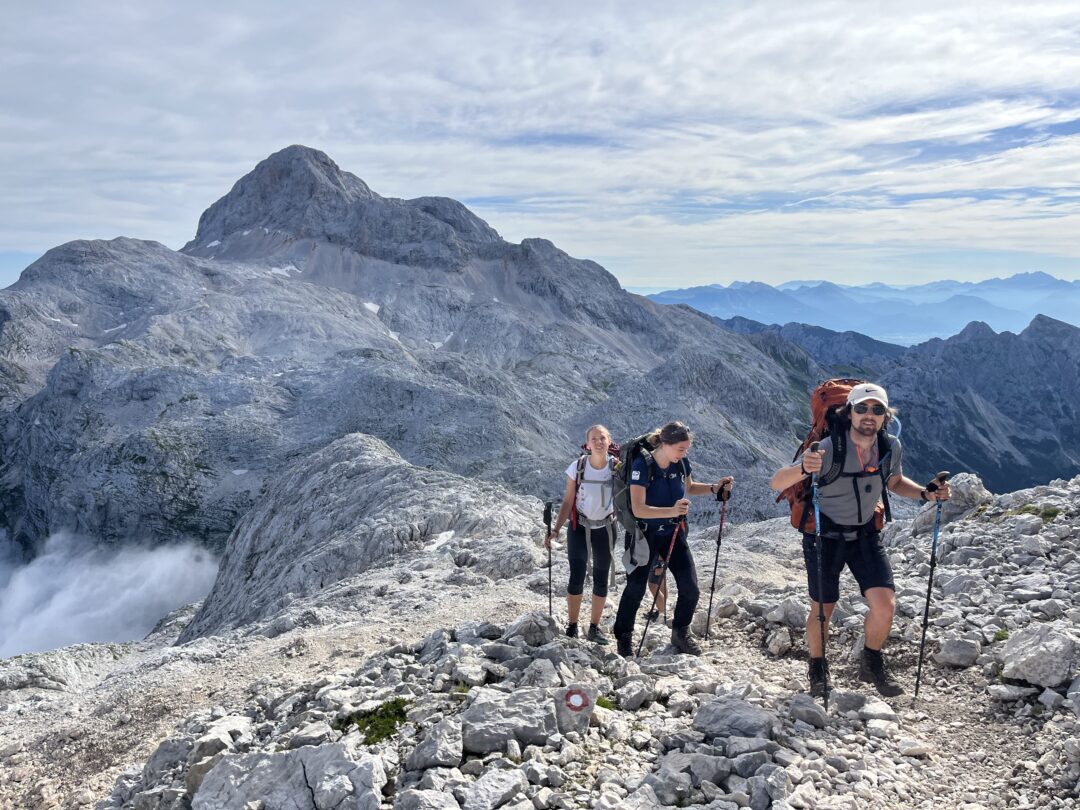
Triglav in the Julian Alps (Level A) – A Perfect First Climb
If we had to pick one best first mountain to climb in the Alps, Triglav would probably top the list. Slovenia’s highest peak (2,864m) is an achievable but exciting objective for first-time climbers.
We designed our 3-day Triglav Summer Climb as a true first-time Alpine summit without jumping straight onto glaciers. The route includes beautiful valley approaches, mountain hut stays, and Via Ferrata sections near the peak, offering a safe and controlled introduction to ropework and exposure.
A Triglav first climb is ideal if you’re comfortable with long days on the trail but haven’t tackled steeper or more technical terrain before. By the end of your adventure, you’ll have developed skills you can carry forward to higher peaks.
For more details about this climbing introduction in the Julian Alps, take a look at our Climb Triglav: Frequently Asked Questions.
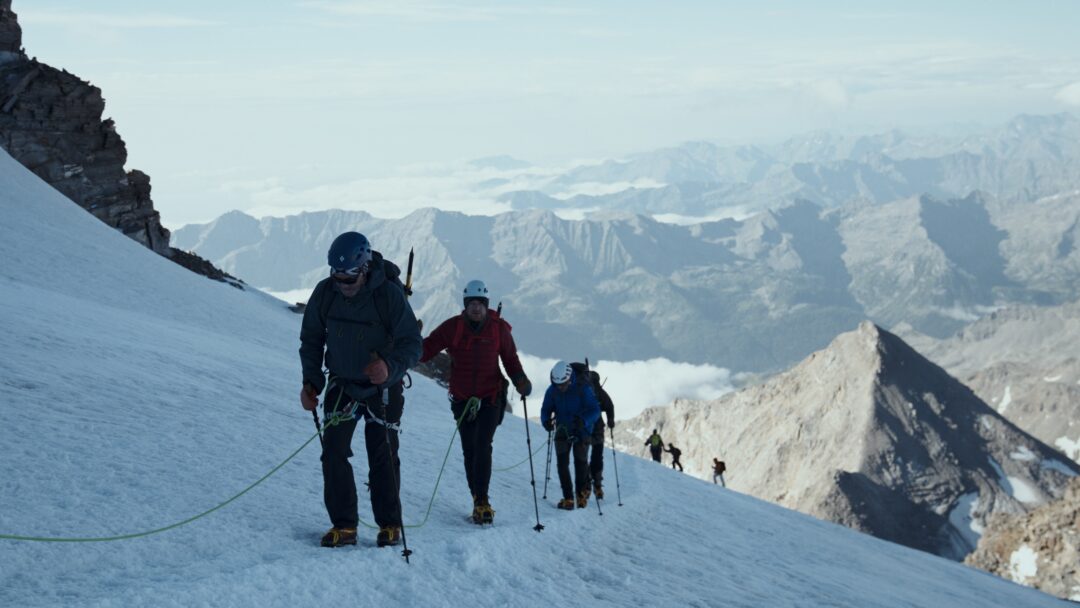
Gran Paradiso (Level B) – A Step Up to Alpine Glaciers
For those with more hiking or trekking experience, a Gran Paradiso climb is a superb choice. At 4,061m, it’s the highest mountain entirely within Italy and offers a real taste of Alpine climbing for beginners, with some added altitude.
Our Gran Paradiso summit climb takes you onto glaciers, where you’ll learn to move with crampons and an ice axe while roped to your guide and teammates. The final rocky summit ridge is spectacular, with jaw-dropping views stretching to Mont Blanc, the Matterhorn, and the Monte Rosa massif.
If you’ve completed big hikes in the UK, the Alps, or elsewhere, and are confident with long days and some exposure, this is one of the easiest mountains to climb in the Alps that still feels like a proper high-altitude challenge.
You can read more about the transition from trekking to climbing in our guide Planning Your First Alpine Trip.
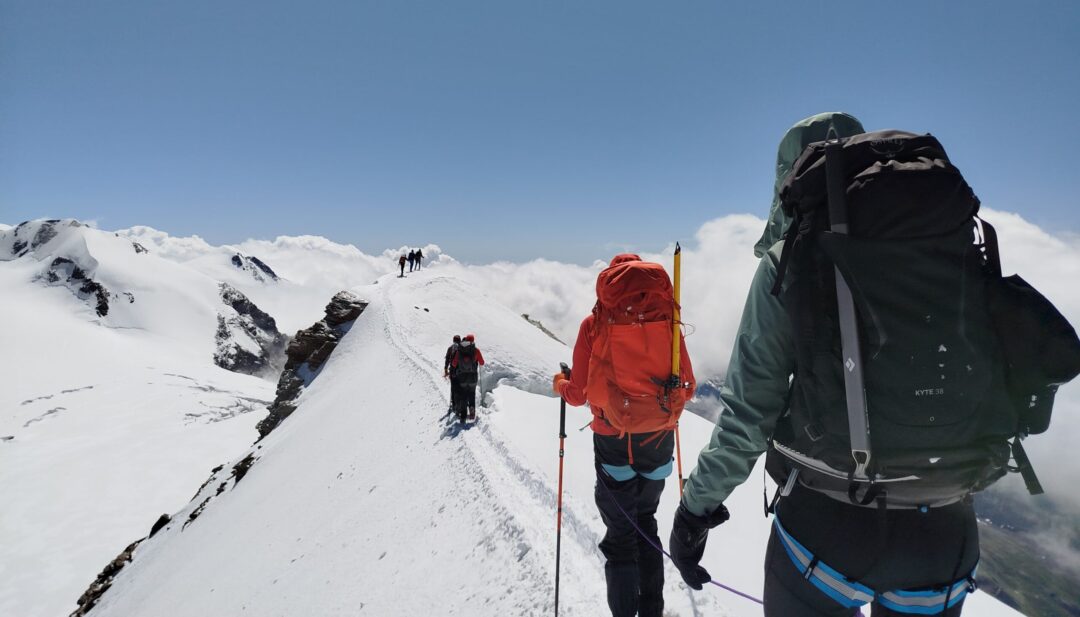
Monte Rosa Spaghetti Tour (Level B) – Multiple Peaks in One Trip
If you’re fit, adventurous, and want to tick off multiple 4,000m summits in one go, the Monte Rosa Spaghetti Tour might be your perfect start. Despite the playful name, this route is a serious introduction to the high Alps, linking a chain of peaks along the Italian–Swiss border in the Monte Rosa range.
This massif is home to 17 recognised peaks, 12 of which are over 4000m. On our Monte Rosa Spaghetti Tour, we aim to summit 10 of these, including:
- Breithorn (4164m)
- Castor (4428m)
- Pollux (4092m)
- Naso Lyskamm (4272m)
- Balmenhorn (4167m)
- Vincent Pyramid (4215m)
- Schwarzhorn (4321m)
- Ludwigshowe (4341m)
- Parrotspitze (4432m)
- Signalkuppe (4554m)
- Zumsteinspitze (4562m)
Whilst not very technical, this is a physically demanding trip, so we recommend some previous mountaineering experience or time spent in challenging outdoor environments. Ultimately, the key to enjoying this tour is to arrive well-prepared physically.
If you do, you will develop your mountaineering skills while soaking in some of the finest views in Europe.

Climb Mont Blanc (Level C) – Conquer Western Europe’s Highest Peak
If you’ve got your eyes set on reaching the highest point in Western Europe, a Mont Blanc climb could be the adventure you’re looking for. While we’ve rated this as a level C adventure, it’s on a par in difficulty with the Monte Rosa Spaghetti tour.
Standing at 4,808m, Mont Blanc entices mountaineers from all over the world year after year. And it never disappoints! From the jaw-dropping summit, you can soak in magnificent views across the rest of the Alps.
The key to a successful Mont Blanc climb is arriving in Chamonix with a high level of endurance and fitness, along with a sense of adventure. Good physical coordination and the ability to learn new skills on the go are also important. Previous mountaineering experience is a bonus, but not essential.
As the highest peak in the Alps and Western Europe, the terrain and altitude make climbing hard work, but with resolute determination, a well-prepared person has everything they need to make it to the top.
Hungry for more on this iconic climb? Be sure to read our blog How Difficult is it to Climb Mont Blanc?
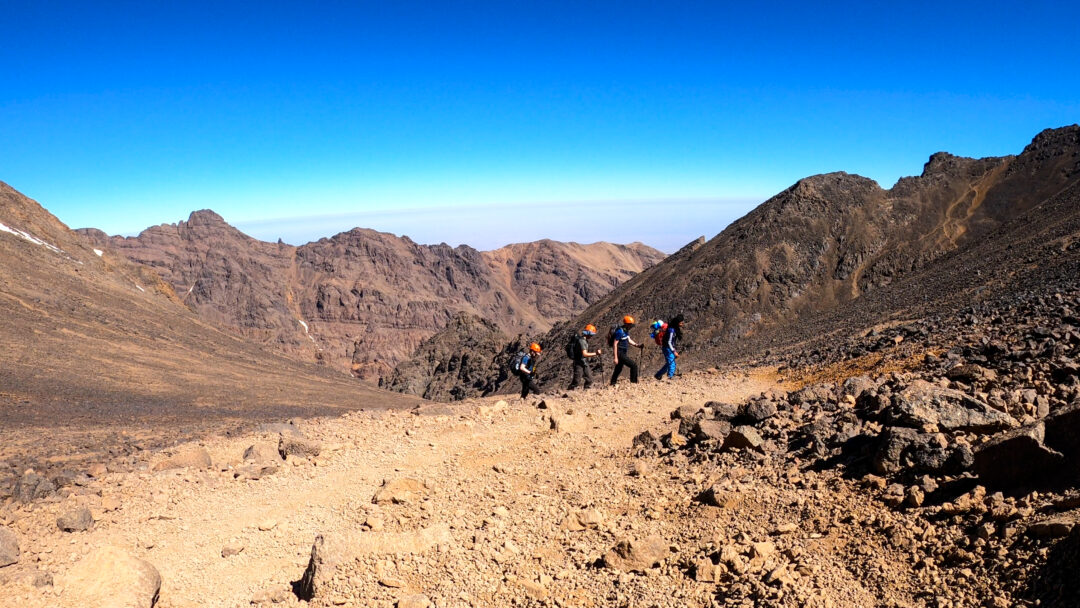
Looking Beyond the Alps – Mount Toubkal, Morocco (Level B)
Sometimes the best way to prepare for an Alpine climb is to build experience elsewhere. At 4,167m, Mount Toubkal in Morocco’s Atlas Mountains offers altitude training and adventure in a completely different environment.
Our Toubkal Summer Climb is a non-technical adventure that suits fit walkers, while our Toubkal Winter Climb adds snow and ice for a taste of mountaineering in harsher conditions. Both options are challenging but suitable for newcomers to mountain trekking and great stepping stones towards your first Alpine climbs.
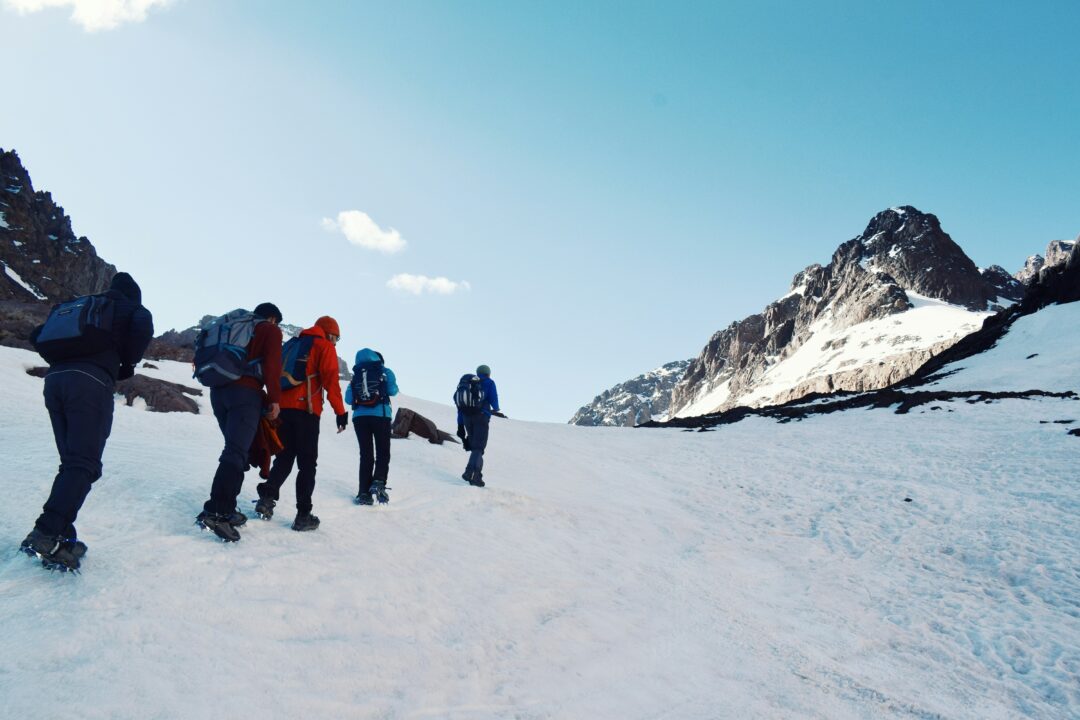
Matching the Alpine Mountain to Your Profile
Here’s a quick reference for guided climbs for beginners in the Alps (and beyond):
- No prior climbing or glacier experience: Start with Triglav.
- Confident hiker with some scrambling or winter walking: Try Gran Paradiso.
- Strong fitness, adventurous spirit, want multiple peaks: Go for the Spaghetti Tour.
- Want altitude practice before the Alps: Choose Toubkal (Summer or Winter).
When you’ve conquered your first climb, you’ll have a thirst for more adventures. The good news is that many more peaks are waiting for you in the Alps! You’ll find all the inspiration you need in our blog 5 of the Best Alpine Routes to Aspire To!
Preparing for Your First Alpine Climb
No matter which peak you choose, preparation is key. Preparing for your first Alpine climb isn’t just about fitness, though that matters. You’ll also want to familiarise yourself with:
- Moving safely on uneven and exposed terrain.
- Carrying and using mountaineering kit like harnesses, helmets, and crampons.
- Building endurance for long, consecutive days at altitude.
Our blog How Do You Prepare Before Climbing a Mountain in the Alps? is a great starting point for those just starting out. We’ve put together some initial training advice, too. And when you book onto one of our summit climbs in the Alps, we provide a more focused preparation plan tailored to the unique challenges of the experience you’ve chosen.
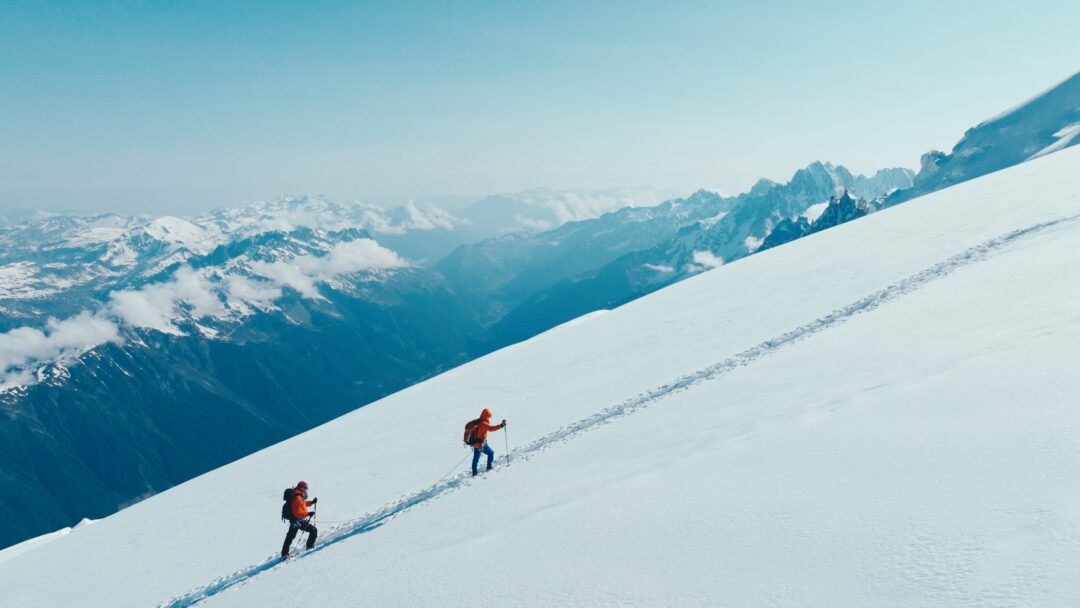
Book Your Climb in the Alps with Us
Choosing your first-time Alpine climb is about finding the right balance between challenge, safety, and enjoyment. Start too hard, and you risk being overwhelmed; start with the right peak, and you’ll build confidence and skills for a lifetime of mountain adventures.
At Adventure Base, we’re here to match you with the climb that best fits your abilities and ambitions. No matter which option you choose, we’ll guide you every step of the way. See our full range of mountain climbs in the Alps and start planning the adventure that will spark your mountaineering journey.
Do you have any questions for the Adventure Base team? Please don’t hesitate to contact us for the answers you need.
